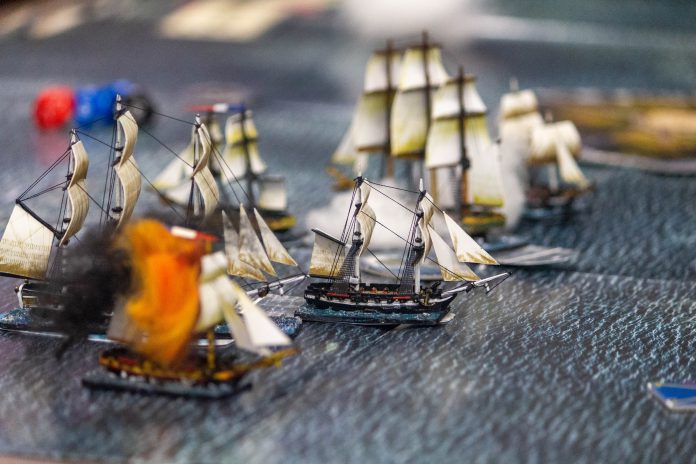This article is part of Goonhammer’s Year of the Ship. You can see the other articles in this series here.
With our reading done, it’s time to crack into actually playing some Napoleonic naval action. We’re going to start off with Warlord Games’ Black Seas, a small fleet based game covering the golden age of sail from 1770 to 1830. As a result, we’re looking here at a game that is designed to cover everything from single-ship action through flotillas, blockades, piracy, privateering and everything else all the way up to the battle of Trafalgar. That’s quite an ambitious aim, but – with the caveat that I haven’t played a full fleet action yet – I think Black Seas pulls it off.
Black Seas launched to much fanfare in 2019, with a solid range following right in time for the pandemic to lock us away for several years. As a result, it has perhaps not made the impact that it could have on the gaming scene, and that’s a shame – there’s a lot to like here.
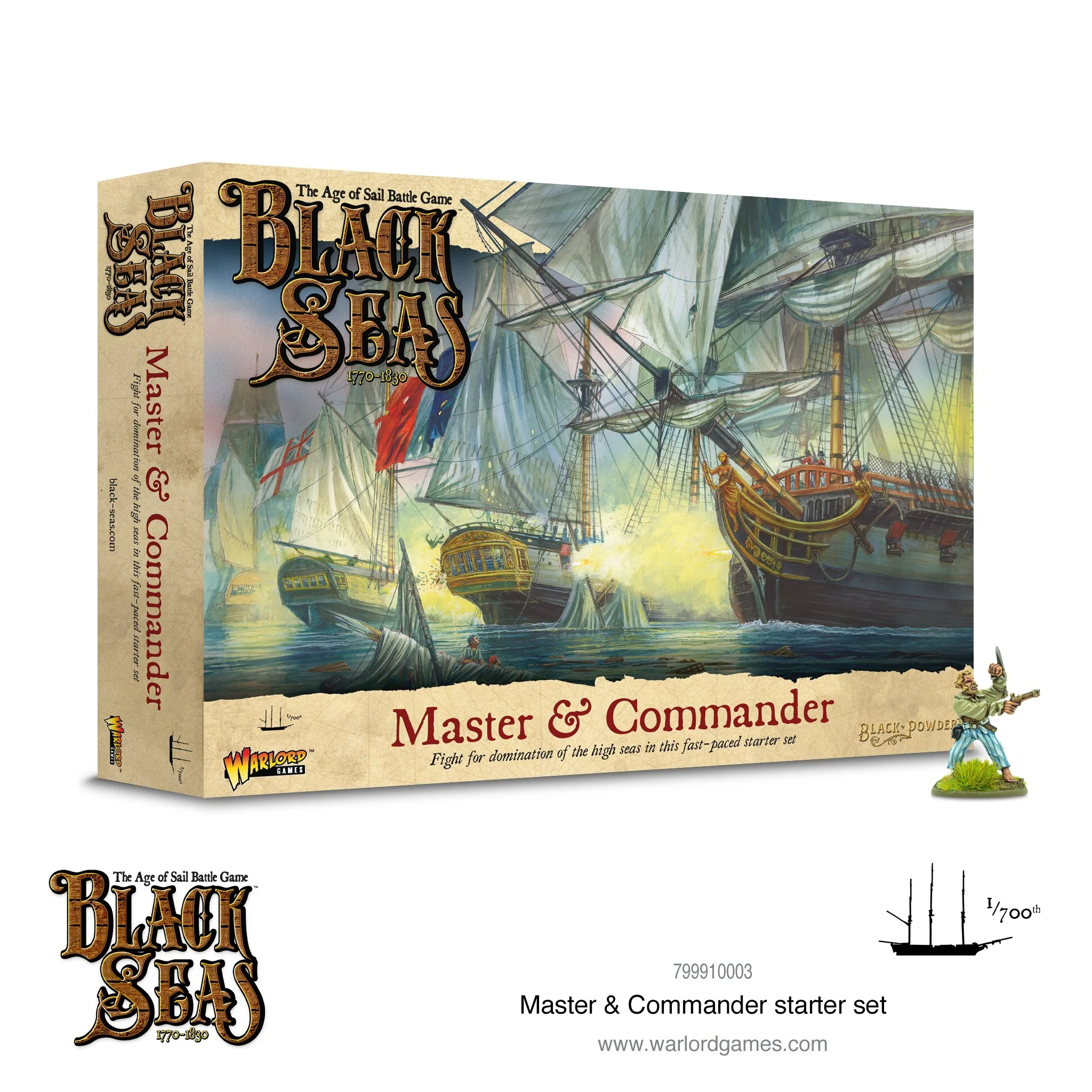
What You Get
In this review we’re looking at the Black Seas core game: The Master and Commander starter set. It’s a rather attractively priced box – a very reasonable £56, or local currency equivalent – packed with all the rules, counters, models and mats you need to get down to playing flotilla-scale battles on the high seas. You’re looking at quite a lot of bang for your buck here, including:
Core rules
3 Frigates
6 Brigs
Rulers, counters, compasses and other card acoutrements
Thread (very important)
Cotton wool (three colours)
Sea mat
Cardboard Terrain
Everything you get in here is of a nice quality, the card components are thick and robust, the models (more later) are probably the best plastics Warlord offers, the rulebook is A4, full colour and very nicely put together and even the sea mat, folded down from A0 (31×47″) is high quality and will stand up to repeated play (and repeated folds). Starter sets often feel like a bit of an incomplete game, which makes a lot of sense, right? You buy it and you’re left wanting more for a fuller experience. But playing Black Seas straight out the box with just the frigates, brigs and cardboard is a surprisingly satisfying game. If you wanted to just get this and then stop, you’d still have a lot of fun with the set. You won’t, though, because ships are awesome.
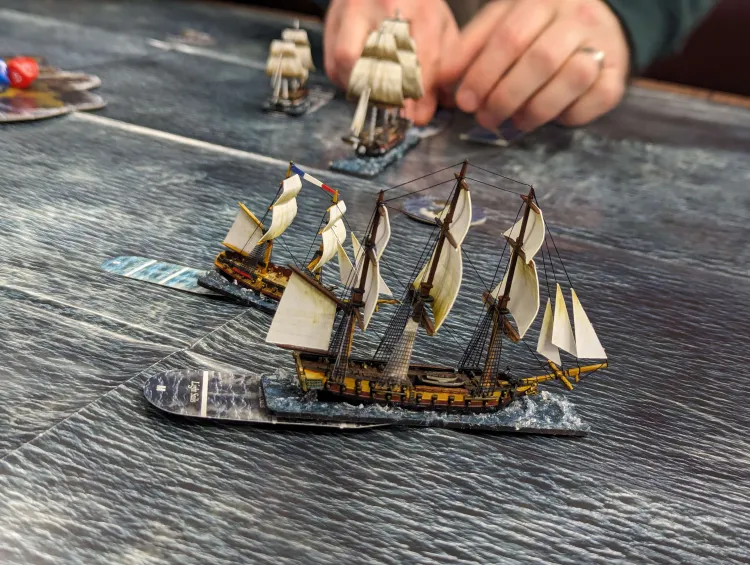
Before diving into the rules, I want to stick with the “what you get” theme to talk about the rulebook. Historicals rulebooks often contain a little historical background – who was fighting, where, when, what with – and that is present here in spades. What’s also present though that I didn’t expect is interesting and relevant further depth into the period. Napoleonic navies are a world apart from us in a way that the armies perhaps aren’t, and the brief but thorough explanations of major ship types, sails, masts, ranks, ratings and even a cutaway of the HMS Victory, goes a long way to demystifying the period if you’re fresh on the boat. Having now at least attempted to read a fair few naval rule sets, they’re often incredibly dependent on you having some/encyclopedic knowledge of not just the historical but the technical context. While the rules still have a little of that about them, the rulebook provides everything you need to know – and more. What a blessing that is to the lubberly.
Rules and Playing
That blessing extends to the rules: A tight 21 pages of clear, well-explained and easy-to-grasp rules that will get you playing in no time. The core rules cover movement, shooting, damage, striking your colours, boarding actions and collisions (I really find myself frequently referring to the collisions rules), while a few extra pages cover raking fire, repairs and the various types of ammunition ships of the period could shoot. Advanced rules add more granular wind rules, firing as she bears (interrupting moves to fire – yours or your opponents) and overall round out the game to a full state. They’re rules designed for quick play that nevertheless feels period-appropriate, and I found them both easy to pick up and easy to explain for demo games.
Speed to table is very much the theme of the rules; they do everything you need them to do, and quickly. Shooting is easy, with coloured dice for each type of gun allowing you to quickly assess damage, movement separates out lumbering and maneuverable ships and most difficult actions are resolved via the ol’ Warlord Games classic, a D6 skill check that is usually a 5-6 for a success.
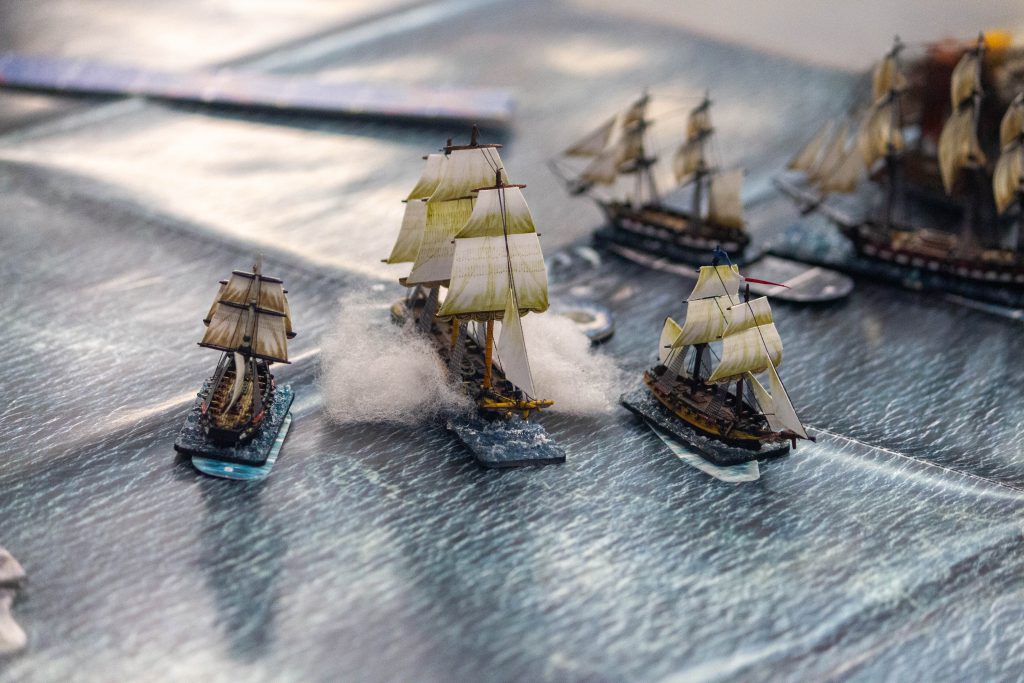
Wind rules – seemingly the scourge of the naval ruleset – are simple to pick up and effective in play, particularly when combined with the range rulers which clearly mark quadrants the wind can hit your ship. As a result, movement is easy to work out, with a simplified system of three movement speeds that are determined by your position relative to wind direction. In other rulesets I’ve perused during Year of the Ship so far, wind position and strength can be tricky. Here, there’s just the right level of abstraction to keep the momentum and all-important attention to the wind that you need for the game to be a age of sail game, but without some of the bookkeeping and finicketyness that, while adding a lot of realism, doesn’t always make for exceptional gameplay.
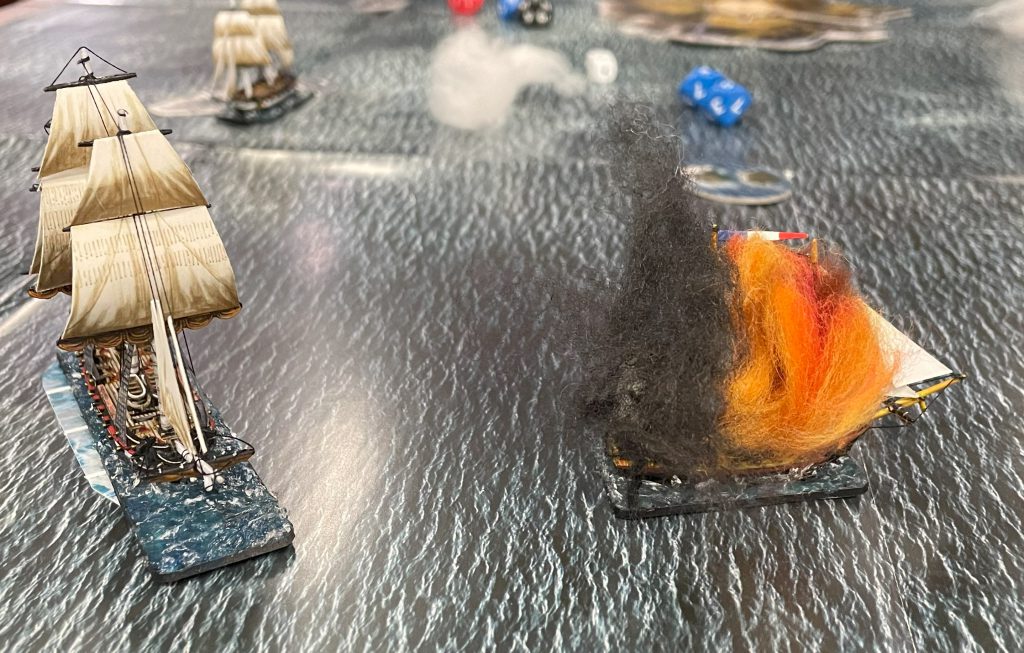
So far I haven’t seen many downsides to the rules that aren’t explained by their nature as a flottila, rather than full fleet, game. I think scaling up to Trafalgar would need either more detail for the real naval grogs or substantially less to allow for quick play. The balance has been struck well, and that means that if you play the game in its ideal state – somewhere between 1-2,000 points (a First Rate, the largest ships of the period, being 450 to give you some idea of what we’re working with here) then you’ll have a great time. Warlord’s perennial issue with imbalanced national rules may raise its head, but apart from the British being naturally just substantially better than everyone else, they seem relatively balanced. The US shoots and takes shots better, the French can take your sails off quick as you like, and the British are very very good. The Spanish rules will leave a bit to be desired as unless you’re taking lots of First Rates who can be horribly over-gunned, your rules are purely detrimental. As I’d imagine your main draws for this game are going to be British, French and US in that order, I don’t know if it will come up all that much, but still – would be nice to have a usable benefit for everyone!
Models and Materials
You get two (and a bit) fair-sized balanced fleets in the starter box, or a great base for a mass fleet if you’re going down the all one nation route. Three frigates and six brigs is a great start (or a satisfying whole) for playing Black Seas. Both ship types are on the smaller end of the full range, and represent the kind of nimble, tricksy ships that Jack Aubrey started his command career on. As a starter force they give you good introductions to the usefulness of heavy and light cannon and cannonades, and have good forgiving movement angles to get you thinking about wind-based movement.
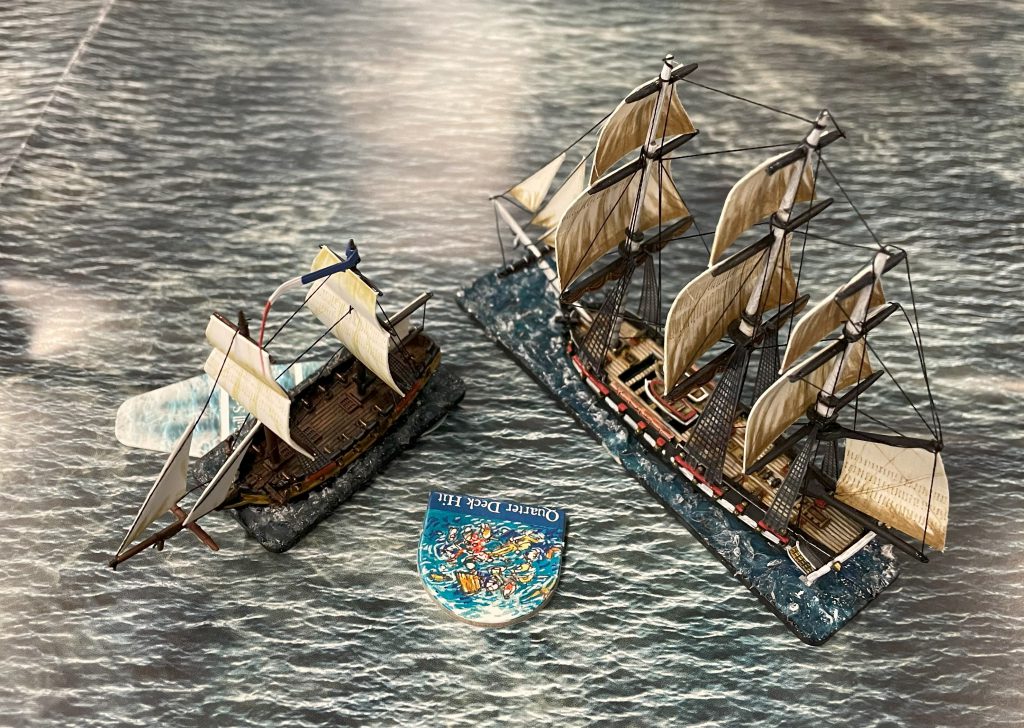
The models themselves are lovely – multipart plastic that builds and fits well, with almost no gaps or lines with excellent detail. They’re a real joy to build and paint, with every cannon present and correct. They lack some of the finer detail that resin or 3d prints of the same size and type of ship might have, but that’s fine – what’s there is very good, and at 1:700 scale you’ll not miss the additional railings, gingerbread-work (all the fancy detailing) and extraneous detail. We’ll have a guide on how to build, rig and add sails to the range coming soon – but in the meantime, instructions on building and rigging your ships are clear and obvious for even the most land-bound wargamer.
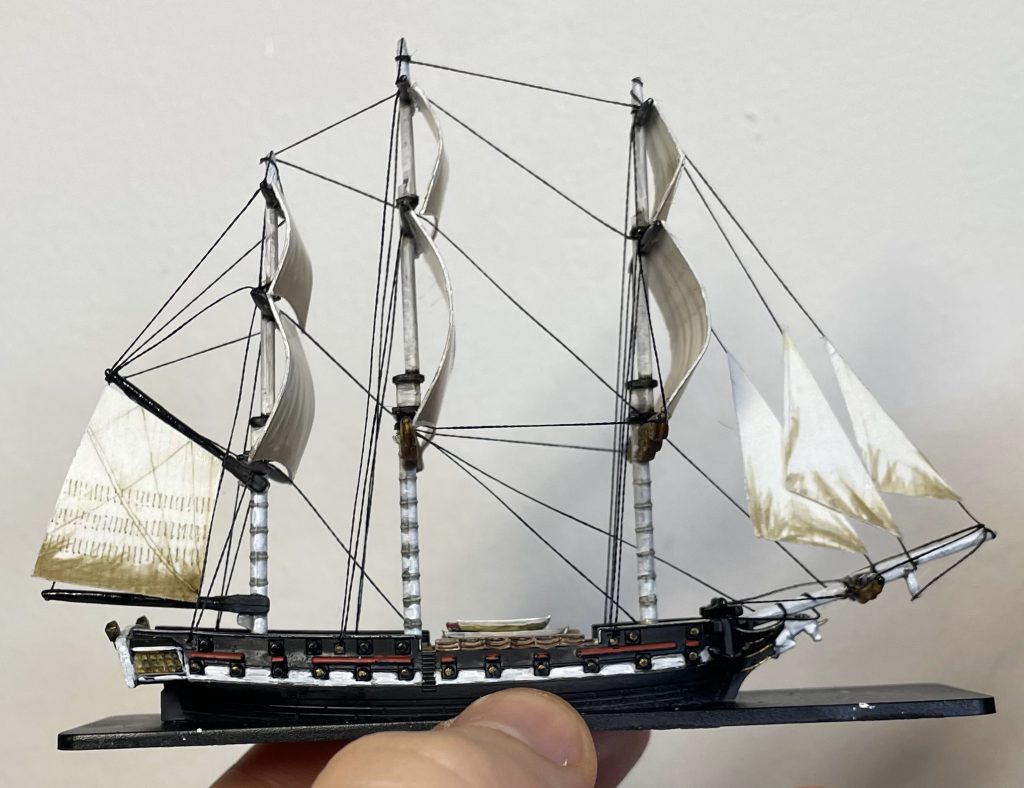
While the brigs are great, the real beauties of the set are the frigates. The wider Black Seas range contains metal, resin and hybrid frigates and frigate-sized ships, but the core plastics are nice enough to hold up without additional bits and bobs. They’re grand, imposing things for all that they’re some of the smallest rated ships sailing at the time. A frigate on each side and a smattering of brigs is more than enough for a satisfying game and even with the core plastics you have a fantastic centrepiece for a flotilla.
Conclusion
Overall, I think this is a really great set. The rules are well-done, feel appropriate and hit the table quick, the models are probably the best plastics Warlord puts out, and offer plenty of opportunities for fancy rigging and attention to detail, and the card components are high quality. It’s a good deal as well, offering two small fleets for playing both sides or just about everything you’ll need for large battles if you take the whole box. I’m excited to play more (and build more) from my first games, and if Napoleonic naval action seems like somewhere you want to go, I’d really recommend picking this up.
Questions, comments, suggestions? Contact@goonhammer.com or leave a comment below
